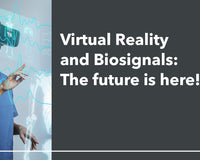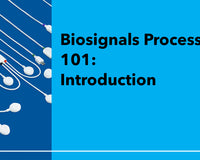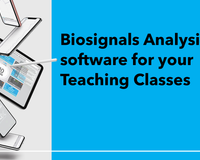Virtual reality (VR) technology keeps advancing, offering new possibilities for immersive user experiences and well-being. Recent research focuses on using VR for relaxation training, emotion classification, and improving user engagement through biofeedback.
This blog post presents 3 use cases of such biofeedback systems to reduce stress and anxiety, classify emotions, and break the sense of VR presence, affecting behavioral and emotional engagement.
Relaxation with Biofeedback in VR
Researchers at the University of Udine (Italy), led by Luca Chittaro, explored using biofeedback in VR to reduce stress and anxiety. Their study examined how biofeedback affects relaxation training.
The VR system uses multiple biofeedback mechanisms— respiration, skin conductance, and heart rate (from PPG sensor) — to influence elements in the virtual environment, boosting user relaxation.
In the study, 35 participants were divided into two groups: one experienced real-time biofeedback, while the other had placebo biofeedback based on recorded data from another user. The real-time biofeedback group had significantly greater relaxation and a stronger sense of presence in the VR environment compared to the placebo group.
This study highlights the potential of integrating biofeedback into VR systems for more effective stress reduction and relaxation training.
For more details, check out the full research paper here.
Emotion Classification with VR and Machine Learning
Researchers at the University of Madeira, NOVA in Lisbon, and ARDITI (Portugal) studied how VR can be used to classify emotional states with machine learning. They showed emotional film clips to participants in both immersive (VR headsets) and non-immersive setups while recording physiological signals like Electrocardiography (ECG), Electrodermal Activity (EDA), Electroencephalography (EEG), Skin Temperature, Respiration, and fNIRS. Participants also provided subjective ratings.

A participant wearing all the biosignals sensors and the HTC Vive headset (Source: research paper)
The study found no significant differences in emotional responses between the two degrees of immersion for most metrics. However, in certain categories like horror and social negativity, lower levels of control were reported in the immersive setup. This suggests that immersion level does not drastically affect the basic emotional dimensions of arousal and valence.
The study compared user-dependent and user-independent models for classifying emotional states based on physiological data and subjective ratings. User-dependent models performed better, achieving average accuracies of 69.29% and 71.00% for subjective ratings and physiological signals, respectively. This highlights the need for personalized models in emotion classification.
This research could lead to real-time emotion classification in VR, adapting experiences based on a user's emotional state. Such advancements could improve user engagement and emotional well-being.
For more details, check out the full paper here.
Optimizing VR Engagement: The Impact of Presence Factors
In the study "Breaking Presence in Immersive Virtual Reality toward Behavioral and Emotional Engagement," researchers from the Universidad Militar Nueva Granada and Vrije Universiteit Brussel examined how different VR presence factors affect user engagement. They aimed to understand how breaking the sense of presence impacts behavioral and emotional engagement during a VR game.
33 participants played a VR arcade game under various conditions, with one of the three presence factors—social presence, self-presence, or physical presence—gradually reduced while the others remained constant. Engagement levels were measured through game performance, exercise intensity, heart rate, and skin conductance.

Sensor setup (source: research paper)
Results showed that exercise intensity was higher when social and self-presence cues were minimized. However, heart rate and skin conductance showed no significant changes based on the presence level. Notably, skin conductance was lower in scenarios with reduced social presence, indicating that breaks in realism affect physiological responses related to perspiration.
The study suggests that VR environments can be optimized for engagement by adjusting the realism of scenarios and body representations based on physiological responses. This approach can help create more engaging VR applications, particularly in training and education.
For more details, you can access the full paper here.
Conclusion
By understanding and leveraging the power of biosignals in virtual reality, we can significantly improve user experiences, emotional well-being, and engagement. These advancements open up exciting possibilities for the future of VR in various fields, from gaming and training to mental health and education.
Have questions? Contact the Biosignals Expert Team directly for personalized advice here.










